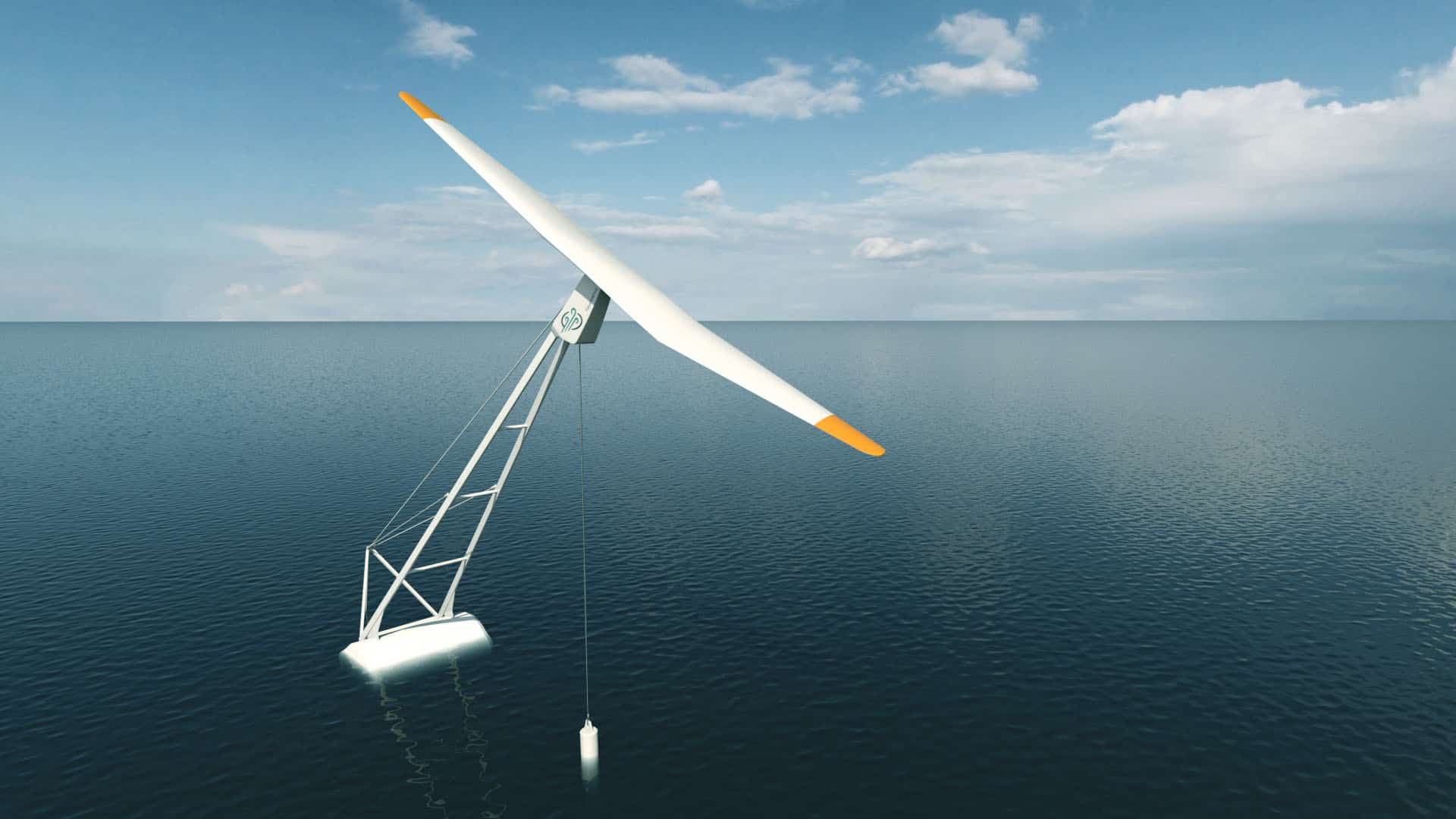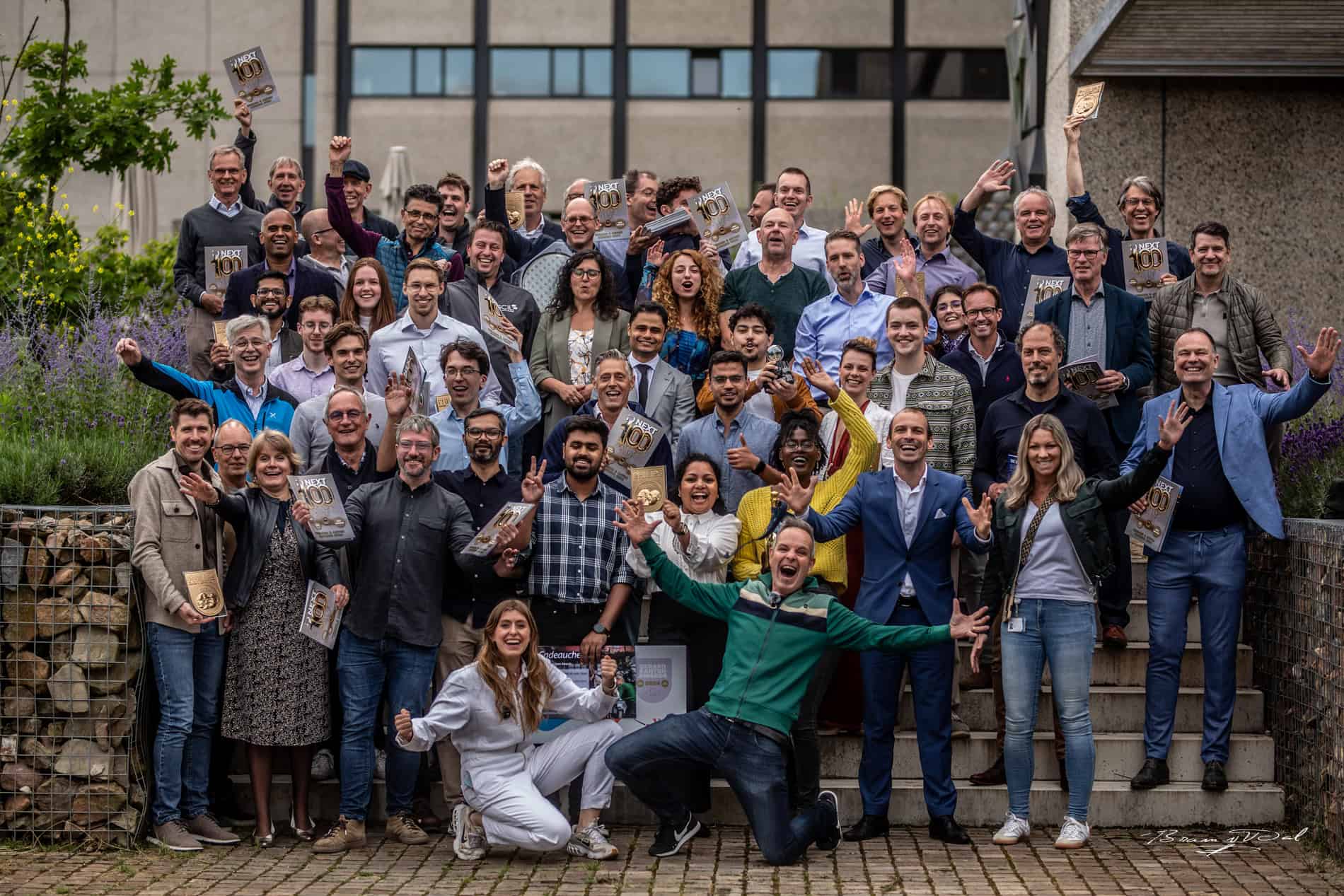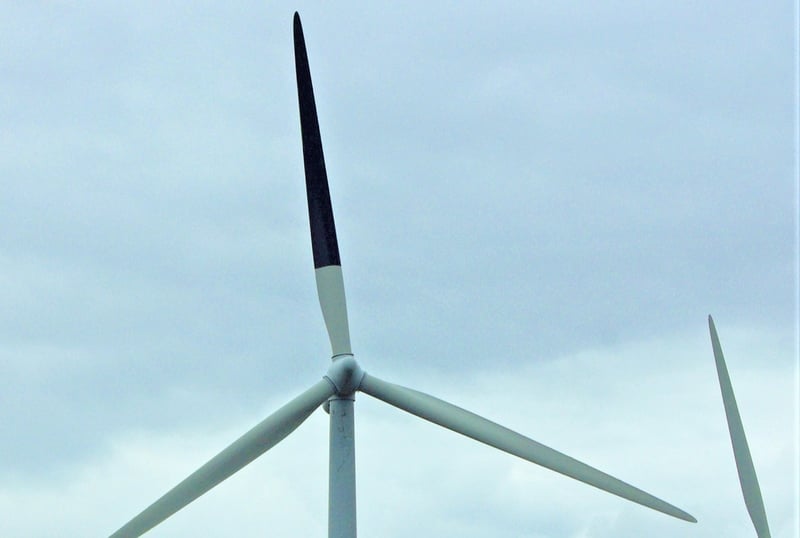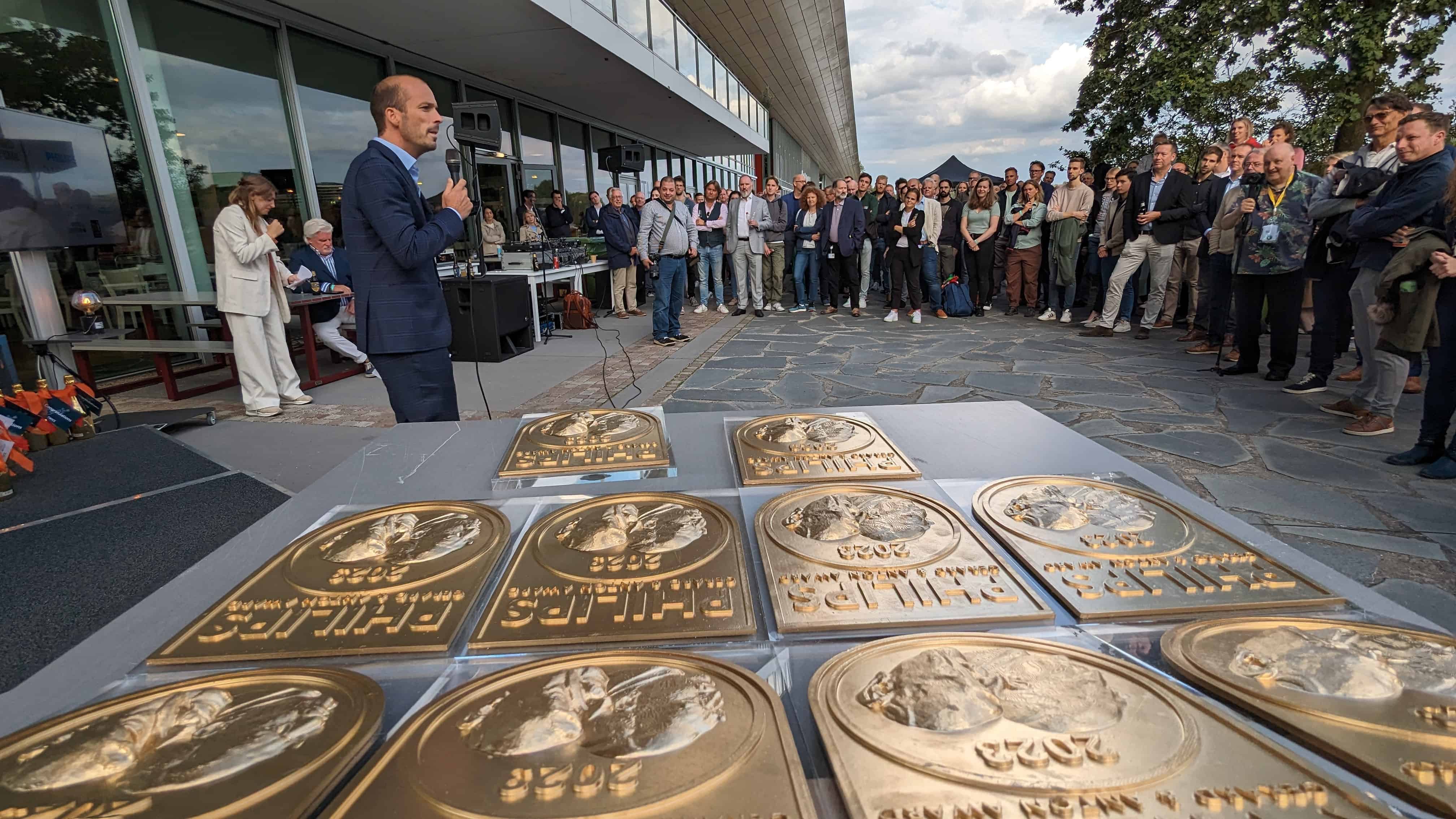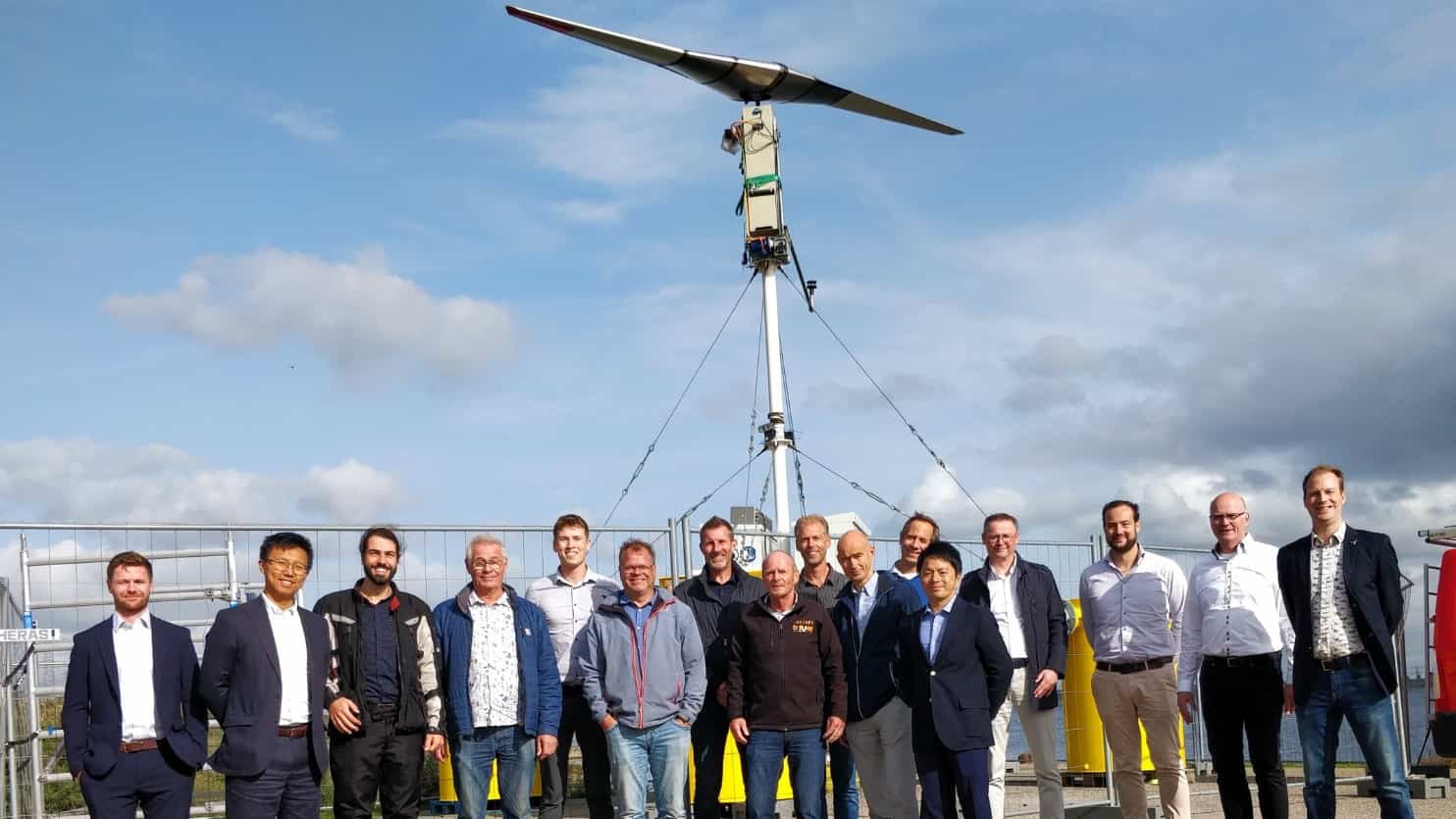
An international consortium of six leading organizations has begun research into the positive zooming effects of wind turbines with tilted rotors. Gerard & Anton Award winner TouchWind is leading the project of a floating wind turbine with one tilted rotor blade. The consortium includes Mitsui O.S.K. Lines (MOL) of Japan, TNO, maritime research institute MARIN, electric motor and drive manufacturer Nidec, and rotor blade specialist We4ce.
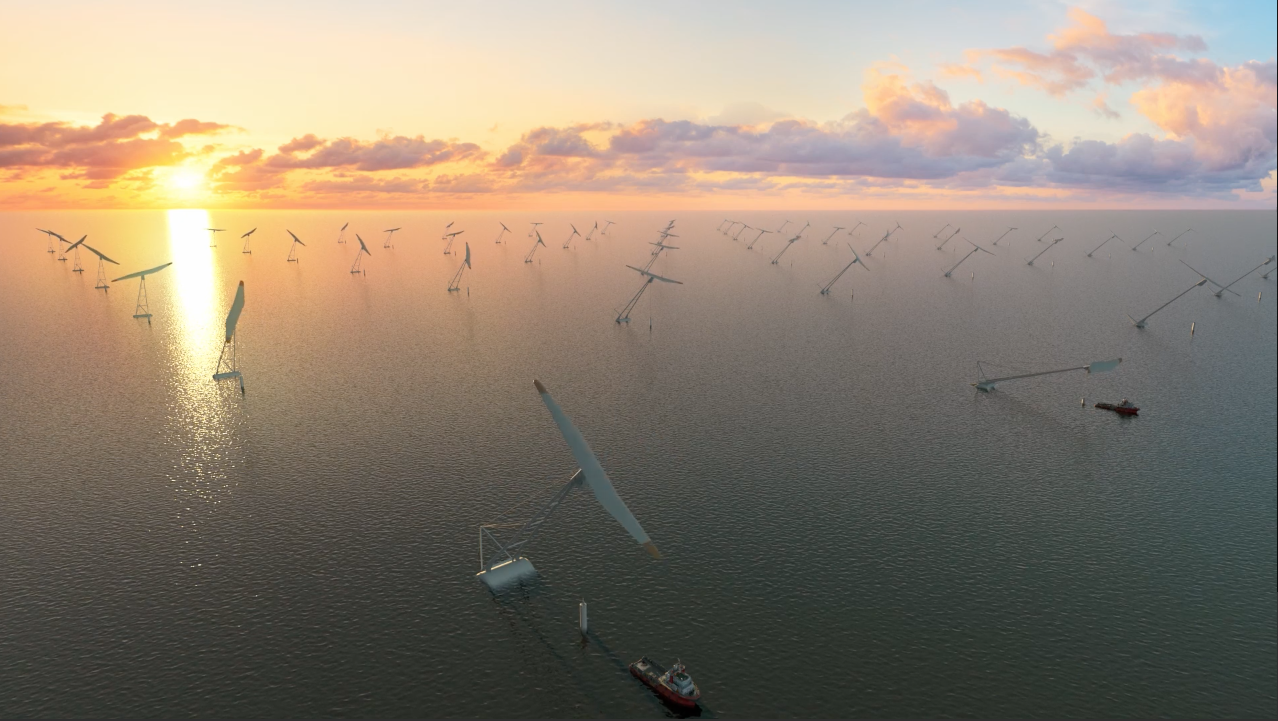
Tilted rotor potential
The POWER project, aptly named “POsitive Wake Effects of turbines with tilted Rotors,” aims to demonstrate that the cost of offshore wind production can be significantly reduced by improving energy yields in offshore wind farms. The project focuses on reducing notorious ‘zoge effects’ (just like an airplane, certain, often highly irregular, wind currents occur behind each wind turbine) that negatively affect turbine performance, i.e. less efficiency and energy production.
Maximizing energy yield
In the project, the consortium focuses on clustering wind farms to optimize space at sea. Research is being done to see if it is possible to place turbines with tilted rotors closer together without compromising energy yield, maximizing wind energy production per square kilometer.
“It is wonderful that we can start this project with ten wind turbines with tilted rotors, together with our consortium partners who all have their own expertise in specific areas of this research and demonstration program.”
Rikus van de Klippe, founder and CEO of TouchWind
Strategic goals
The POWER project aims to reduce losses due to wake effects by using turbines with tilted rotors to effectively deflect the wake. In addition, the consortium aims to validate the concept that turbines with tilted rotors can act as wind ‘pullers’. That is, it brings more wind from higher air layers to a wind farm and thereby creates a positive effect. These effects could pave the way for wind farms with significantly higher power densities.
Prototype development and testing
Within the POWER project, TouchWind, in collaboration with Nidec and We4Ce, will develop ten prototype turbines with tilted rotors of 6 meters in diameter. The project includes extensive field tests, first on land and then on water.
TNO and MARIN will play a crucial role in the testing phase, where extensive measurements will be carried out to evaluate different wind farm layouts regarding configuration and distance, validating the concept and numerical models.
The POWER project is partly made possible by a financial contribution from Rijksdienst voor Ondernemend Nederland (RVO).



